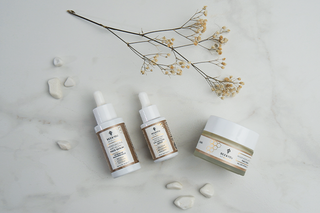What is Bee Venom?
Bee venom is a natural substance produced in the venom sac of female worker bees in a beehive, which they use to defend themselves against threats. Also known as apitoxin, bee venom is released through a stinger connected to the venom sac, injecting it into the target when the stinger pierces the skin.
Physical Characteristics of Bee Venom
Bee venom is yellowish in color, with a bitter-sweet taste and a pungent odor. It is normally in liquid form but can crystallize after coming into contact with air, undergoing a physicochemical transformation.
Bee venom appears as a clear, odorless, liquid substance, resembling water, with a sharp and bitter taste. It is a clear and acidic fluid that dries and turns into a light yellow color, losing around 30-40% of its weight when it dries at room temperature.
Chemical Composition of Bee Venom
Bee venom consists of approximately 12% sugars such as glucose and fructose, minerals like calcium and magnesium, phospholipids, enzymes such as phospholipase and hyaluronidase, proteins, peptides including mellitin, apamin, adolapin, and MCD peptides, fats, volatile compounds, and pharmacologically active compounds such as dopamine and norepinephrine, among at least 18 identified components. About 88% of bee venom is composed of water.
Why is Bee Venom So Valuable?
The production rate of bee venom is very low in newly emerged bees. Bees start producing venom when they are 3 days old, and they reach their highest production capacity at around 2-3 weeks of age. Afterward, their ability to produce venom decreases. An adult bee can carry 0.15-0.3 mg of bee venom in its venom glands. Since bee venom composition is 88% water, only 0.1 µg of dry venom can be obtained from each bee. This means that 10,000 bees are needed to produce 1 gram of dried venom.
How is Bee Venom Produced?
When bees sting, they inject approximately one-third of their venom. During the stinging process, the bee loses its stinger, venom sac, nervous system, and muscles, eventually leading to its death.
Bee venom has been used in apitherapy for many years. However, to benefit from bee venom, it is crucial for it to be of high purity and quality. This can be achieved through the implementation of proper production techniques. The machine and equipment used in bee venom production, along with conscious colony care and management, feeding, the season in which production takes place, and storage conditions, all affect the quantity and quality of bee venom.
As the demand for bee venom in medical and cosmetic fields increases, efforts have been focused on sustainable colony health, bee welfare, product quantity, and product quality. Devices have been developed to harvest bee venom without harming the bee's life.
Methods of Bee Venom Collection
At the entrance of the hive, bees drip bee venom on the surface of the glass plates on which they walk. Glass plates prevent bees from losing their stingers and dying during the scraping process. This method allows to obtain bee venom without harming the bees.
Benefits of Bee Venom
Bee venom is widely used in traditional medicine for various purposes. The bioactive components found in bee venom have been the subject of scientific research due to their antibacterial, antifungal, antiviral, anti-inflammatory, antirheumatic, anticancer, and analgesic (pain-relieving) effects, as well as their positive effects on the immune system, central and peripheral nervous systems, cardiovascular system, skeletal and muscular systems, and the skin.
Benefits of Bee Venom on the Skin
Bee venom, with its peptides and enzymes, helps:
- Stimulate collagen and elastin production.
- Enhance the skin's plumpness, regulate its color tone, and promote a smoother appearance.
- Reduce the appearance of fine lines and wrinkles.
References:
- https://www.researchgate.net/publication/350996830_BAL_ARISI_ZEHRININ_KOMPOZISYONUNU_VE_URETIM_MIKTARINI_ETKILEYEN_FAKTORLER
- https://services.tubitak.gov.tr/edergi/yazi.pdf;jsessionid=TMhmMOA+tcDtD7TmXb51W2YH?dergiKodu=4&cilt=33&sayi=397&sayfa=88&yaziid=12449

